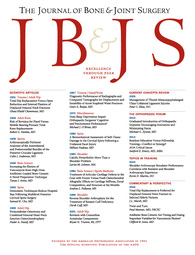
HAND & WRIST
Nonoperative treatment vs volar locking plate fixation for distal radial fractures
This report has been verified
by one or more authors of the
original publication.
J Bone Joint Surg Am; 2011; 93(23): 2146-53
73 elderly patients with displaced unstable distal radial fractures were randomized to receive either open reduction and internal fixation (ORIF) with a volar locking plate or cast immobilization. The results from 12 month follow-up indicated that patients who received ORIF displayed no significant differences in comparison to cast immobilization on the basis of pain, range of motion, patient satisfaction, and disability. However, it was found that patients who received ORIF had a significantly higher complication rate in comparison to patients who received cast immobilization.
Unlock the full ACE Report
You have access to {0} free articles per month.Click below to unlock and view this {1}
Unlock NowCritical appraisals of the latest, high-impact randomized controlled trials and systematic reviews in orthopaedics
Access to OrthoEvidence podcast content, including collaborations with the Journal of Bone and Joint Surgery, interviews with internationally recognized surgeons, and roundtable discussions on orthopaedic news and topics
Subscription to The Pulse, a twice-weekly evidence-based newsletter designed to help you make better clinical decisions
Exclusive access to original content articles, including in-house systematic reviews, and articles on health research methods and hot orthopaedic topics
Or upgrade today and gain access to all OrthoEvidence content for just $1.99 per week.
Already have an account? Log in


Subscribe to "The Pulse"
Evidence-Based Orthopaedics direct to your inbox.
{0} of {1} free articles
Become an OrthoEvidence Premium Member. Expand your perspective with high-quality evidence.
Upgrade Now













































































